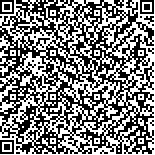兰月,徐光青,林拓,江力生,窦祖林.吞咽造影数字化分析评价脑干卒中后吞咽障碍患者咽部功能治疗前后的变化[J].中华物理医学与康复杂志,2015,37(8):577-580
扫码阅读全文

|
| 吞咽造影数字化分析评价脑干卒中后吞咽障碍患者咽部功能治疗前后的变化 |
|
| |
| DOI: |
| 中文关键词: 脑卒中 吞咽障碍 吞咽造影 球囊扩张术 |
| 英文关键词: Stroke Deglutition disorders Videofluoroscopy Balloon dilatation |
| 基金项目:国家自然科学基金面上项目(81371441);广东省科技计划项目(2013B051000036, 2014B020212001) |
|
| 摘要点击次数: 3657 |
| 全文下载次数: 4792 |
| 中文摘要: |
| 目的使用吞咽造影数字化分析方法观察改良球囊扩张术治疗对脑干卒中后吞咽障碍患者咽部收缩功能的影响,定量评价脑干卒中后吞咽功能变化。 方法选取30例脑干卒中后经吞咽造影诊断为咽期吞咽障碍的患者,按患者治疗方法的不同,将接受球囊扩张术治疗的15例患者设为球囊扩张组,接受常规吞咽治疗的15例患者设为常规治疗组。球囊扩张组给予球囊扩张术治疗和常规吞咽康复治疗,各1次/日,每次30min;常规治疗组仅给予常规吞咽康复训练,2次/日,每次30min;2组治疗均为5次/周,共3周。分别于治疗前和治疗后,进行吞咽造影评估和数字化测量分析,测量指标包括咽收缩率和咽收缩持续时间。 结果治疗后球囊扩张组在吞咽稀流质、浓流质及糊状食物时,患者的咽收缩率分别为(0.20±0.03)、(0.14±0.05)和(0.15±0.04),治疗前后差异均有统计学意义(P<0.05);治疗后球囊扩张组患者吞咽稀流质、浓流质及糊状食物时咽收缩持续时间分别为(990.34±96.14)、(1010.47±133.64)和(1180.10±121.27)ms,治疗前、后差异有统计学意义(P<0.05)。常规治疗组患者治疗后吞咽稀流质、浓流质及糊状食物时的咽收缩率及咽收缩持续时间治疗前后差异亦有统计学意义(P<0.05)。 结论吞咽造影数字化分析能够有效地量化吞咽功能,咽收缩率及咽收缩持续时间可用于分析咽部功能治疗前后的变化。 |
| 英文摘要: |
| Objective To evaluate the effect of the modified balloon dilatation intervention on the pharyngeal constriction function of the brainstem stroke survivors with dysphagia using videofluoroscopy-based digital analysis. MethodsThirty brainstem stroke survivors with pharyngeal dysphagia were recruited and randomly divided into a treatment group and a control group, with 15 in each. The treatment group was treated with the modified balloon dilatation in addition to the routine treatment of 30min, respectively, once a daily, 3 days a week, whiled a control group was treated with routine treatment of 30min twice a day, 3 days a week. Before and after the treatment, the rate and duration of pharyngeal constriction were measured in both groups. Results After the treatment, the rate of pharyngeal constriction in the treatment group was (0.20±0.030), (0.14±0.05) and (0.15±0.04) when swallowing thin liquid, thick liquid and pasty food,significantly better than before the treatment. The duration of the pharyngeal constriction was (990.34±96.14), (1010.47±133.64) and (1180.10±121.27) ms, respectively, also significantly better than before the treatment. In the control group, significant differences were also observed in the rate and duration of pharyngeal constriction before and after the treatment. ConclusionsDigital analysis based on videofluoroscopy can be used to quantify swallowing function effectively, and the rate and duration of pharyngeal constriction can be used to evaluate the pharyngeal function before and after treatment. |
|
查看全文
查看/发表评论 下载PDF阅读器 |
| 关闭 |
|
|
|